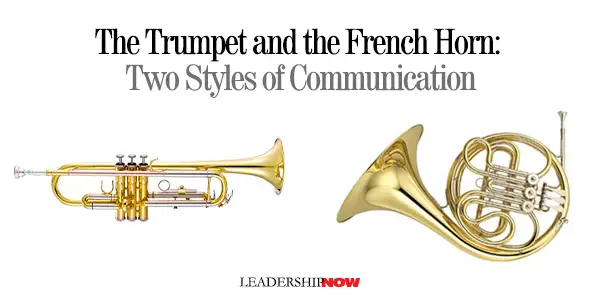 |
 |
02.07.20

The Trumpet and the French Horn: Two Styles of Communication
EFFECTIVE COMMUNICATION requires that we know how to best communicate with others. In other words, communicate with them the way they want to be communicated to. Diana Peterson-More shares two ways people like to take in information in her very practical book Consequential Communication in Turbulent Times, direct and indirect. Communication can be direct and straightforward, which often entails using the “w” words: “What do you think? What would you like me to do? What’s your answer? Why should we do it that way? Why her not me? Why not do it this way?” or “Which direction should we take?” To illustrate this concept, she introduces trumpets and French horns: For those who like the straightforward style of communication, let’s call them trumpets. The thoughts go straight from the brain to the mouth in an immediate exhale/response. “W” questions typically work with trumpets. 
Posted by Michael McKinney at 10:27 AM
|
BUILD YOUR KNOWLEDGE
 

How to Do Your Start-Up Right STRAIGHT TALK FOR START-UPS 
Grow Your Leadership Skills NEW AND UPCOMING LEADERSHIP BOOKS 
Leadership Minute BITE-SIZE CONCEPTS YOU CAN CHEW ON 
Classic Leadership Books BOOKS TO READ BEFORE YOU LEAD |